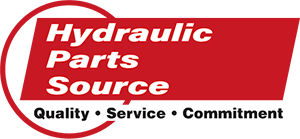Avoiding Devastating Cavitation Damage
Hydraulic pump cavitation is a destructive issue. It is the likely cause of symptoms such as excess noise and energy usage, damage to the pump, and pump failure.
Although each of these symptoms can indicate other concerns, cavitation is one of the most problematic as it can compromise your entire hydraulic system. It’s the second leading cause of hydraulic pump failure behind hydraulic fluid contamination.
For this reason, let’s look at some causes of cavitation, how to recognize that it is happening, as well as how to prevent damage and maintain the health of hydraulic systems.What is Cavitation and What Causes it?
Cavitation occurs from the formation and resulting collapse of vapors within a hydraulic pump. Excessive vacuum conditions at a pump’s inlet (supply) side create vapor bubbles within hydraulic fluid that are then moved to the discharge (pressure) side, at which point they collapse. The moment of collapse is when the damage of cavitation occurs.Cavitation is especially destructive to metal surfaces, which have little elasticity. The explosive force of cavitation causes friction and wear, which eventually leads to damage, and if left untreated, it will result in pump failure.
Although the leading cause of cavitation is poor plumbing, there are many other ways this destructive force can begin.Some of these other possible causes of cavitation in a hydraulic pump include:
- Flow restrictions
- High oil viscosity
- Clogged filters
- Pipe blockage
- Poor piping design
- Conditions not meeting NPSH (net positive suction head) requirements
Identifying Cavitation in a Hydraulic Pump
Most often, cavitation is heard – it’s identified by a recognizable sound. There are other visual signals, however, that are accurate clues when a pump is experiencing cavitation.When you are concerned that cavitation is occurring in a hydraulic pump, pay attention to:
- The sound - A whining sound from the pump can indicate mild cavitation, while a rattling sound best described as “marbles in a can” can indicate intense implosions
- The physical evidence - Metallic debris found in the hydraulic oil filter during routine maintenance may indicate cavitation
- The damage - If the pump and its components are clearly damaged, it may be the result of cavitation
Troubleshooting and Prevention
If end-users are experiencing cavitation, there are some easy troubleshooting practices that can fix the problem, limit damage, or help avoid the problem entirely.
Here are some troubleshooting and preventative steps that can be taken:- Check filters and strainers, looking for metallic debris
- Determine the absolute pressure available (NPSHa) and required (NPSHr) for the suction port of the pump
- Check oil viscosity and ensure it is appropriate for the application and climate conditions
- Prevention
- Increase liquid level around the suction area
- Increase pump suction line size to reduce turbulence
- Maintain proper oil viscosity for your components and based on the climate / environmental conditions
Best Practices for Avoiding Cavitation
Continuing a regular maintenance schedule on your hydraulic systems and looking out for signs of cavitation are the best preventative measures that may already include the above steps. However, there are some practices that can further protect hydraulic systems from cavitation damage.Practices include:
- Ensuring pumps have flooded suction, i.e. using a straight path from the reservoir to the pump to use gravity and atmospheric pressure to feed the pump vs. relying on vacuum pressure to draw fluid in
- Using a proper breather cap on the reservoir, or pressurized (3-5 PSI) with an air system or pressure breather cap
- Assuring that any supply line shut-off valve is fully open and has no restrictions
- Inspecting for buildup in reservoir strainer (if present)
- Considering laminar flow and reduce noise and turbulence at the pump inlet by making sure the length of the supply hose is at least 10 times its diameter
Doing the Work Can Save Your Hydraulics
Starting with knowing what cavitation is, what causes it, and distinctive ways to recognize it, end-users can avoid going down the road that may lead to a compromised hydraulic system.Another way to avoid pump and systemic damage due to cavitation is to maintain preventative measures and practices.
In the end, it’s always best to steer away from cavitation by knowing the symptoms and doing the work to diagnose, fix, and prevent cavitation.
---The above information is based on general pump manufacturer recommendations and HPS’ years of hydraulic pump remanufacturing & troubleshooting experience. Machine maintenance manuals should always be followed. Situations exist that are beyond the scope of what we’ve covered in this article. This information is not all-encompassing but may serve as advice for other professionals in the fluid power field who help troubleshoot end-user applications. HPS is available to help if you have any questions on pump installation & troubleshooting.

